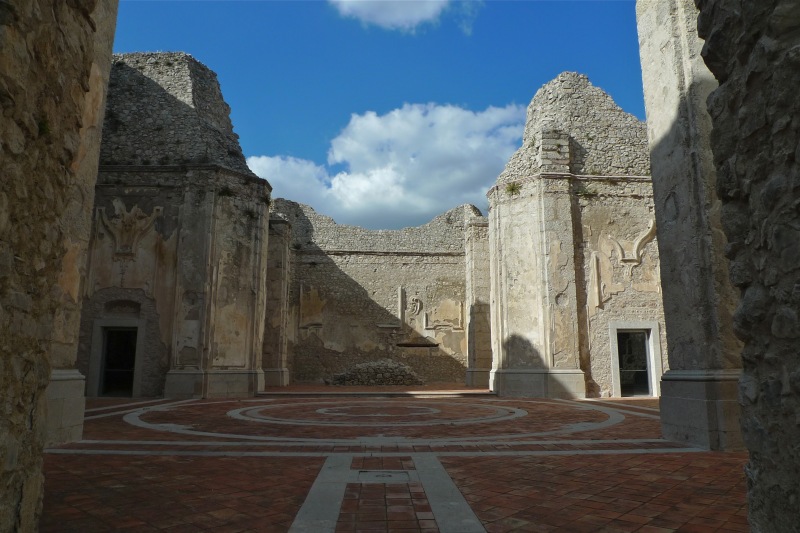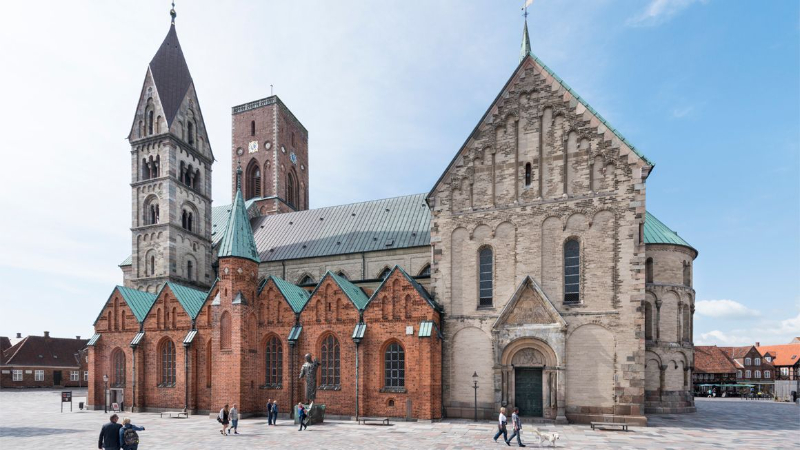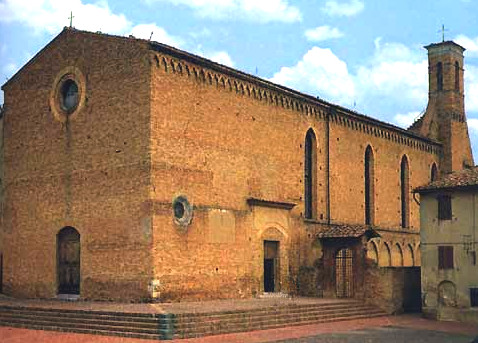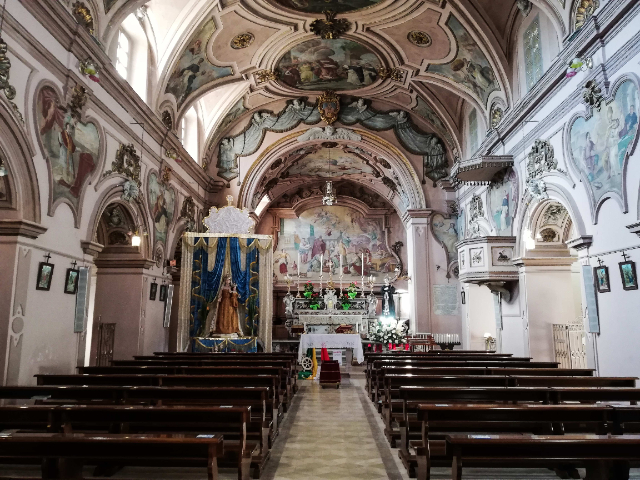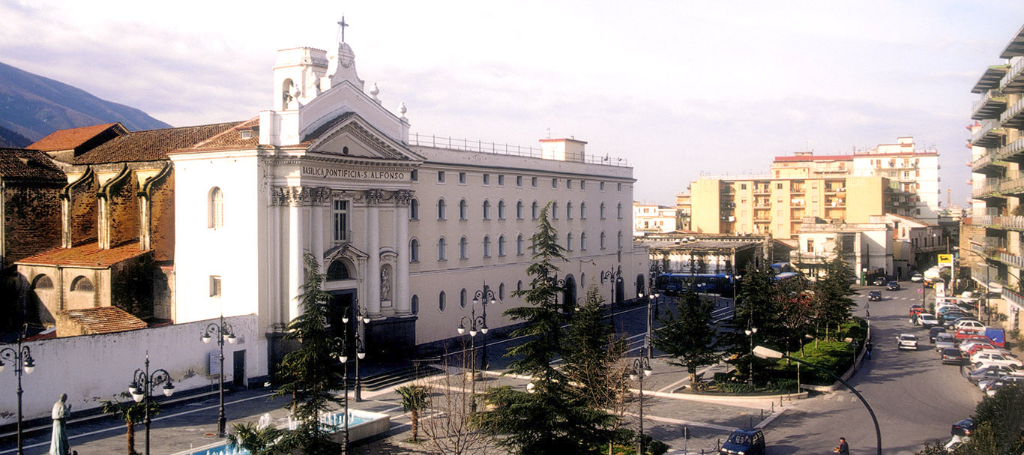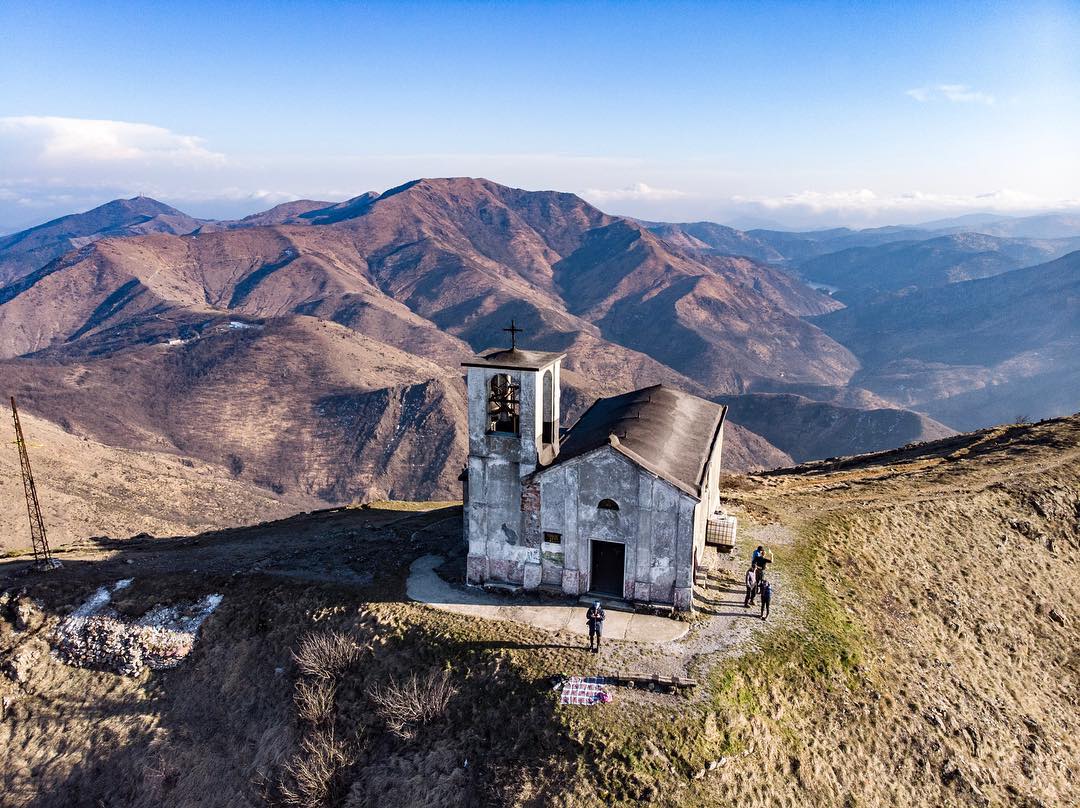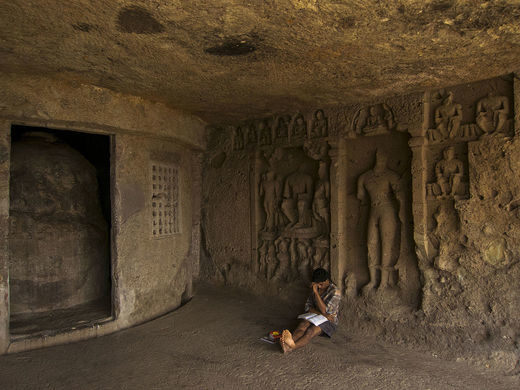Scattered throughout the abbey are various signs of white esotericism, such as a sacred center that recalls the sacredness of the place, the triple walls interpreted by some as a stylization of Solomon’s Temple in Jerusalem or a point of magnetic energy, the cross of the Word that also seems to call to mind four teams.
In 1212 Abbess Febronia had the defensive tower built to defend the lives of the nuns, partly because many were scions of aristocratic families. Fragments of a mausoleum of a Roman general Paccius Marcellus, who commanded the 6th Scythian Legion, were reused in the tower. The tower is embellished with a number of symbolic sculptures: the crescent moon linked to Christianity as light and knowledge, the face of God, the dome of the rock, the shell linked to St. James, and the flower of life; the various symbols are linked to Jerusalem and heighten the idea that the Templars might have been located here.
The monastery was also a stopping point for pilgrims on their way to Jerusalem being on the major Roman roadway, the Appian Way therefore the presence of Templars, escorting pilgrims, is not ruled out.
The convent was inhabited until 1515 with the death of the last abbess; the Pope in 1506 closed the convent, entrusting it to the monks of Montevergine. Another moment of splendor was the 1700s, when in the years 1735-45 the Vaccaro church was planned, which then collapsed after 1807 probably due to an earthquake. It is currently unroofed but retains the typical charm of crumbling ruins. The sarcophagus of St. William was supposed to be on the altar, later moved to the church, while his remains were moved to Montevergine. Some canvases from the church are now kept in the Cathedral Church of Sant’Angelo dei Lombardi.
In 1807 Napoleon closed several monastic complexes including the Goleto, which remained in a state of abandonment until 1973 when Father Lucio De Marino asked permission to live at the Goleto and initiated the project to restore the complex, which had been partially despoiled by its use as a quarry for materials. After the 1980 earthquake, restoration work began with advice from the Federico II Faculty of Architecture.
The jewel in the Abbey is the chapel of St. Luke, which can be reached via an external staircase where a handrail in the shape of a snake with an apple in its mouth can be seen, either a warning to temptation or, as other traditions unrelated to the Christian view would have it, representing the key to knowledge. The church was built in 1255 by Abbess Marina, as the inscription on the front of the arch (of a pink color typical of Apennine limestone worked by artisans of Samnite origin) states, to house a relic of St. Luke, perhaps the ulna probably preserved in the inner altar (today the reliquary is preserved); the patente cross one of the symbols most sacred to tempters also appears there. On the frontispiece is a lion figure, which in the Christian understanding represents Christian strength. Of the many frescoes that were to decorate the room only traces remain of the fresco of the abbesses Scholastica and Marina and some episodes from the life of St. William. It is likely that technicians from the court of Frederick II worked in the chapel of St. Luke, having connections with Abbess Marina. There is a sculpture of St. William with a wolf as the story goes that such an animal mauled the saint’s mule and was later tamed or is related to the transposition of the pagan tradition that sees the wolf as the totemic animal of the people of Irpinia. The spatial distribution is reminiscent of the chapter rooms where they gathered to study sacred texts. The north-facing wall probably housed the abbess’s chair. In one of the columns the allegory of the tree of life appears, while in the other central one at the base rats are seen attacking the column, that is, the animal rat of evil can attack if one turns away from the faith. Other symbolism is related to the floor (now of restoration) has 8 tiles on each side symbolizing rebirth in Christian tradition as the base of the column of the tree of life and the alternation of black and white is often related to Templar symbolism.
The ancient scolatoi with the various aulettes can also be visited.
